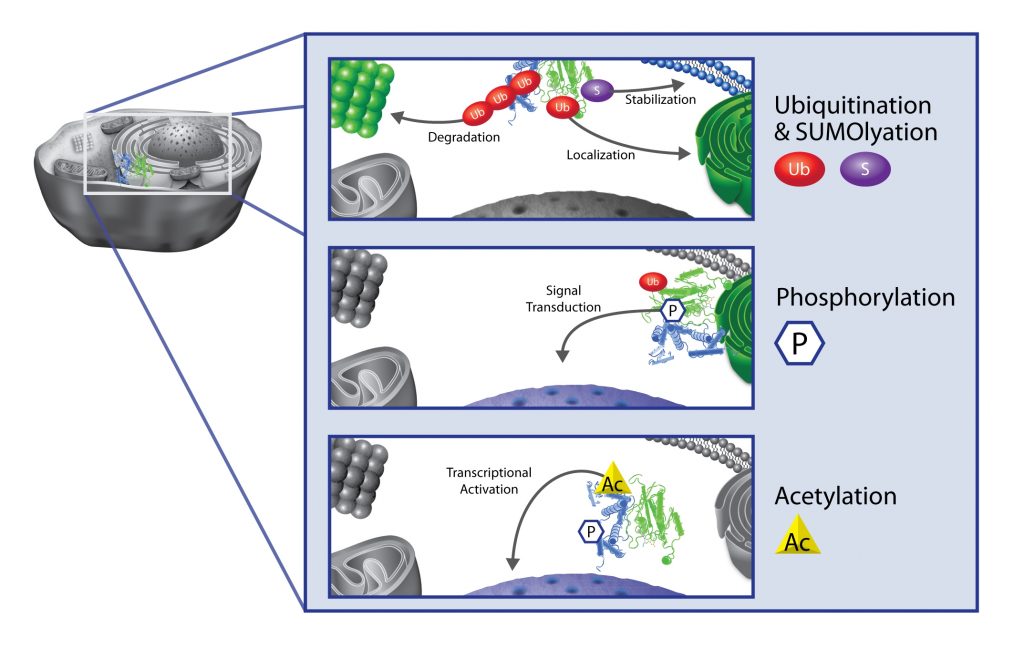Cell signalling with Ub Affinity beads – Example with Ub-Rac1

> For more information about Ub detection tools, see our ubiquitination white paper here.
Other examples of cell signalling ubiquitination regulatory mechanism identified with the Signal-Seeker Ub Detection Kit
UB Affinity beads have numerous other applications as illustrated by the detection of PD-L1 Ub in serum-restricted A431 cells pretreated with Gefitnib (see image below, or access Dr Horita’s publication: Horita H. et al. “Identifying Regulatory Posttranslational Modifications of PD-L1: A Focus on Monoubiquitinaton” Neoplasia (2017) 19, 346–353).

Additional uses include :
- Investigating transient regulatory mechanisms involved in cell signalling
- Measuring cell signalling events of multiple pathway member proteins
- Discovering new modifications of your protein of interest
- Gaining insight into regulatory mechanisms
- Measuring endogenous or transiently expressed protein and cell signalling events
Related products you might also like for your cell signalling research:
-
- Ubiquitination Affinity Beads (Cat. nr UBA01-beads)
- Ubiquitin Mouse Monoclonal Antibody (Cat. nr AUB01)
- BlastR Rapid Lysate Prep Kit (Cat. nr BLR01)
- Signal-Seeker Ubiquitination Detection Kits (30 Assays – Cat. nr BK161)
The Signal-Seeker products allow simple analysis of key regulatory PTMs (Acetyl-Lysine, Phosphotyrosine, SUMOylation and Ubiquitination) via affinity bead systems to isolate and enrich modified proteins from any given cell or tissue lysates. The enriched protein population is then analyzed by standard western blot procedures using a primary antibody to the target protein.
To find out more about Signal-Seekers kits, take a look at Cytoskeleton’s video!



